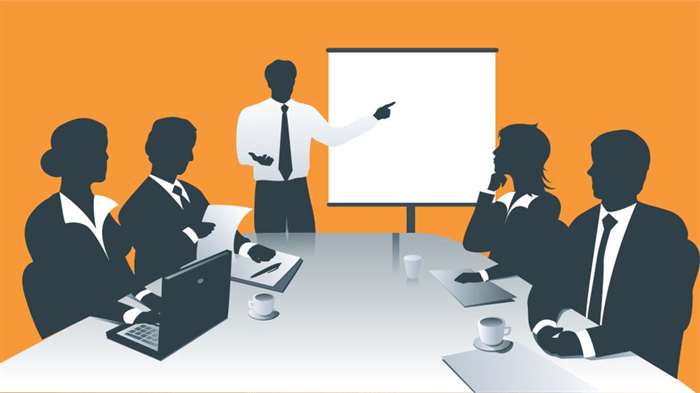Likewise, a strategic pivot for the company sends your group again to the “storming” part. At the Performing stage, managers should keep encouraging staff decision-making and downside fixing as the staff members have the data, experience, and belief in one another. “With group norms and roles established, group members focus on reaching frequent goals, usually reaching an unexpectedly high degree of success.”[4] By this time, they’re motivated and knowledgeable. The group members are now competent, autonomous and in a position to deal with the decision-making process without supervision. Dissent is predicted and allowed as long as it’s channelled via means acceptable to the staff. The Bug Banisher Team begins to hold weekly meetings to share and monitor progress with all of the members.
- Even the most high-performing groups will revert to earlier stages in sure circumstances.
- Tuckman’s theory is that each group moves via 4 levels on its method to changing into a high-performing team.
- Chris asks each group member if they’ve attended annual security training in the past.
- The variety of risks and dependencies sent these established and cohesive dev groups right into a flurry of (ultimately, unproductive and/or counter-productive) activity.
- A group that works collectively to resolve issues will belief one another extra.
- She explains that each one is valuable as a result of it can lead to one other, higher thought.
Establishing group collaboration early on can help reduce the impression of—or even prevent—this stage of group improvement. This doesn’t necessarily mean that conflicts won’t occur. In fact, disagreement is crucial to effective staff collaboration. So when conflicts do arise, it’s essential to resolve them with effective problem-solving as they come instead of avoiding them. Having a staff with already current collaborative skills can help resolve conflicts extra simply and quicker. The first stage of group growth is the forming stage.
In this free ebook, learn how to create a shared sense of purpose in your staff. The forming-storming-norming-performing cycle repeats extra typically than you would possibly assume. The hospital CEO asks Chris to create a group to deal with this problem. The goal is to increase workers participation in the hospital’s annual security coaching program. The initial stage is often marked by a mixture of attitudes and feelings.
Additional Developments
“Resolved disagreements and character clashes result in higher intimacy, and a spirit of co-operation emerges.”[4] This happens when the staff is conscious of competitors and they share a standard aim. In this stage, all group members take responsibility and have the ambition to work for the success of the team’s targets. They start tolerating the whims and fancies of the opposite staff members. They accept others as they are and make an effort to move on. The hazard right here is that members may be so targeted on stopping battle that they’re reluctant to share controversial ideas. Rina, the chief of the Bug Banisher Team, involves Mr. Marcus thirty days after the preliminary assembly.

For instance, if a brand new member joins the group, there may be a second transient interval of formation while that person is built-in. A group can also must return to an earlier stage if its efficiency declines. Team-building exercises are sometimes carried out to help a staff through its improvement course of.
This results in a interval often identified as storming—because it can contain brainstorming concepts and likewise as a outcome of it normally causes disruption. During the storming stage members begin to share ideas about what to do and tips on how to do it that compete for consideration. Team members begin to open up and confront one another’s ideas and views. Every team moves by way of the 4 stages of improvement, and will slip again a stage or two as new challenges or alternatives come up.
Accomplishments in team course of or progress are measured and celebrated. Many of us should manage a staff at some point in our lives. When that time comes it’d assist you to to know that each one teams undergo a collection of sequential phases as they develop in path of sustained levels of excessive efficiency and synergy. As a staff lead, it’s your goal to get your group to this stage as rapidly as potential.
Once norms are established and the staff is functioning as a unit, it enters the performing stage. By now group members work collectively simply on interdependent duties and are able to communicate and coordinate effectively. There are fewer time-consuming distractions based mostly on interpersonal and group dynamics. For this purpose, motivation is often excessive and team members believe in their capability to achieve targets. Behaviors during the Storming stage could additionally be much less polite than during the Forming stage, with frustration or disagreements about objectives, expectations, roles and duties being openly expressed.
During this stage, it’s essential to write down objectives and assignments to eliminate ambiguity. It’s additionally important to hold common standing checks, to assess progress, determine where persons are stuck, provide help, and give regular effective suggestions. For the chief, it’s equally essential to ask for feedback and demonstrate openness to receiving it, acknowledging its worth, and performing on it. In agile software growth, high-performance teams will exhibit a swarm behavior as they arrive collectively, collaborate, and concentrate on solving a single drawback. Swarming is a someday habits, in distinction to mob programming, which may be thought of as swarming on a daily basis.
Using The Phases Of Staff Growth
It may be tempting to avoid battle, but doing so doesn’t assist group building. A team that works together to resolve issues will trust one another extra. They can rely on each other to do the hard work they have been hired to do, regardless of any variations that come up.
The ideal is that they will not really feel that they’re being judged, and can therefore share their opinions and views. Normally tension, battle and sometimes arguments happen. While engaged on a high-performing team may be a really pleasurable and growthful experience, it’s not the tip of team improvement. There continues to be a need for the staff to concentrate on both process and product, setting new objectives as acceptable. Changes, corresponding to members coming or going or large-scale changes within the exterior setting, can lead a team to cycle again to an earlier stage.
Behavior of the swarms is way higher to be seen as they transfer collectively If the process is utilized to the group it’s going to act and give higher output. Team members are in a place to stop or clear up issues within the group’s course of or within the staff’s progress. A “can do” angle is seen as are provides to help each other. Roles on the team may have turn into more fluid, with members taking up numerous roles and obligations as needed. Differences among members are appreciated and used to boost the group’s efficiency.
Collaborative On-line Analysis And Learning
They could feel sadness or a way of loss about the changes coming to their staff relationships. And on the similar time, group members might feel a way of deep satisfaction at the accomplishments of the team. Individual members might really feel all of these items at the similar time, or may cycle through feelings of loss adopted by emotions of satisfaction. Given these conflicting emotions, particular person and group morale might rise or fall throughout the ending stage.

The next stage of group improvement is the storming stage. In this stage, staff members are in the strategy of studying the means to work collectively. As staff members begin collaborating, conflicts may come up, whether that’s from clashing personalities or opinions on how a project should progress.
Alternatively, some team members could discover focussing on the task at hand is an efficient response to their unhappiness or sense of loss. Some groups do come to an end, when their work is completed or when the organization’s needs change. While not part of Tuckman’s authentic model, it is necessary for any group to concentrate to the end or termination course of. This is also the time in which teams can rejoice every thing they’ve achieved collectively. Take the time to reflect on your achievements and remind your group why they’re doing what they do. This is also an excellent opportunity to recognize and praise the skills of particular group members.

The getfit challenge is a free 12-week, team-oriented health challenge open to the whole MIT community. Get your group registered by January 21, and get ready for all the enjoyable, camaraderie, perks, and potential prizes that come with participation. There are a nice deal of ways to grow a company – find out about our method right here. You and your teammates trust one another sufficient to get slightly creative and progressive, while nonetheless delivering top-notch work on time.
Confront Battle In A Healthy Manner
It’s a 10-minute funding that pays large dividends. Engineering administration, management, software structure, high-performing groups, skilled progress. They ultimately agree on some team norms and discover a approach to collaborate. The team’s level of battle and antagonism drops, and different people turn out to be extra constructive, supportive, and understanding. These are the indicators to identify the transition into this stage. Because storming may be contentious, members who’re averse to conflicts could find it disagreeable and even painful.
Alternatively, if your team is having challenges meshing, it may take them longer to get work accomplished. To guide your team as it develops, it helps to know the stages of group improvement. Have you ever questioned why it takes some time for a model new staff to hit peak performance? In this article, we talk about stages of team development the different levels of group development and how leaders can information their team through those levels to increase collaboration. Eric Douglas is the senior associate and founding father of Leading Resources Inc., a consulting agency that focuses on growing high-performing organizations.

